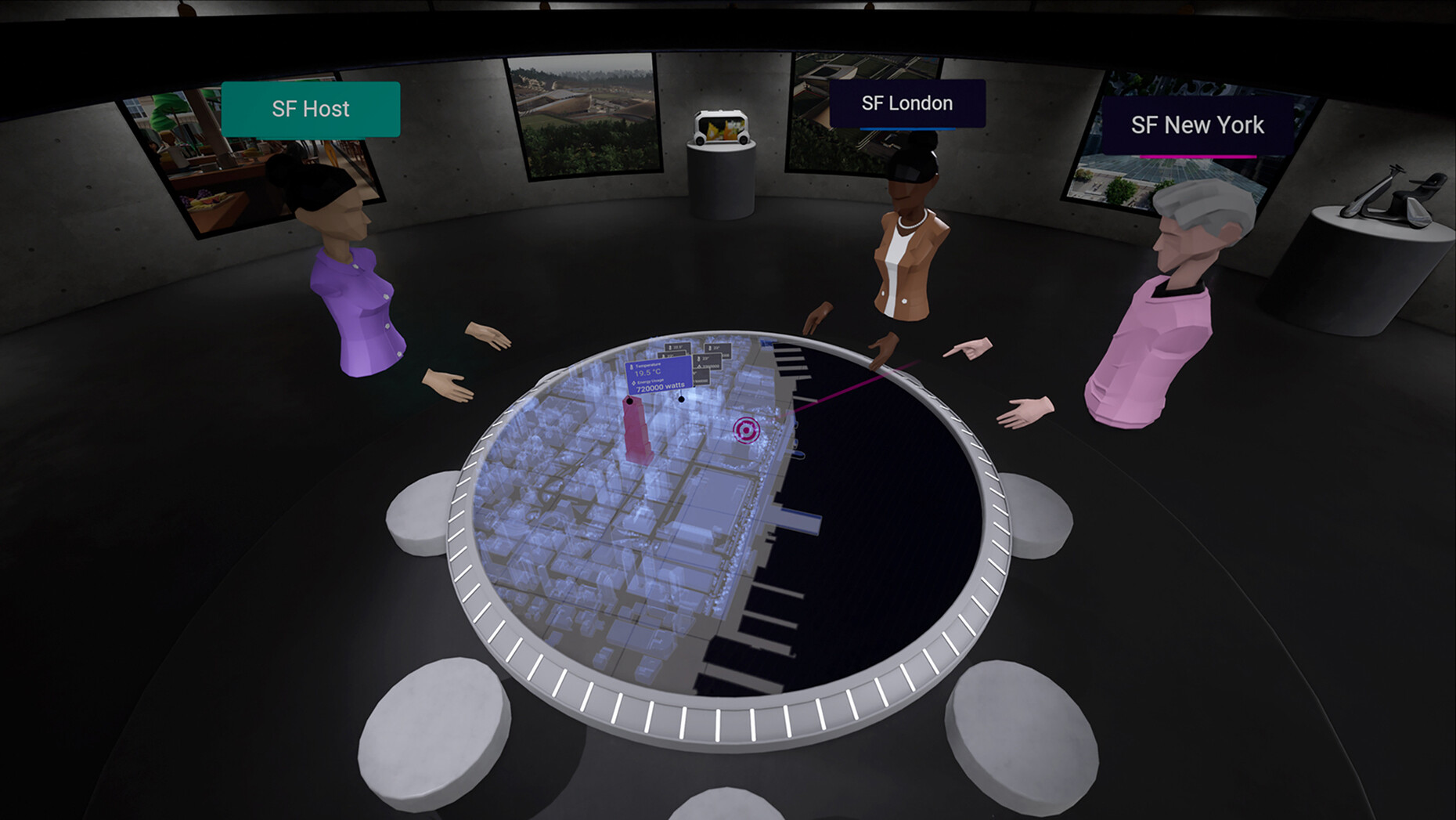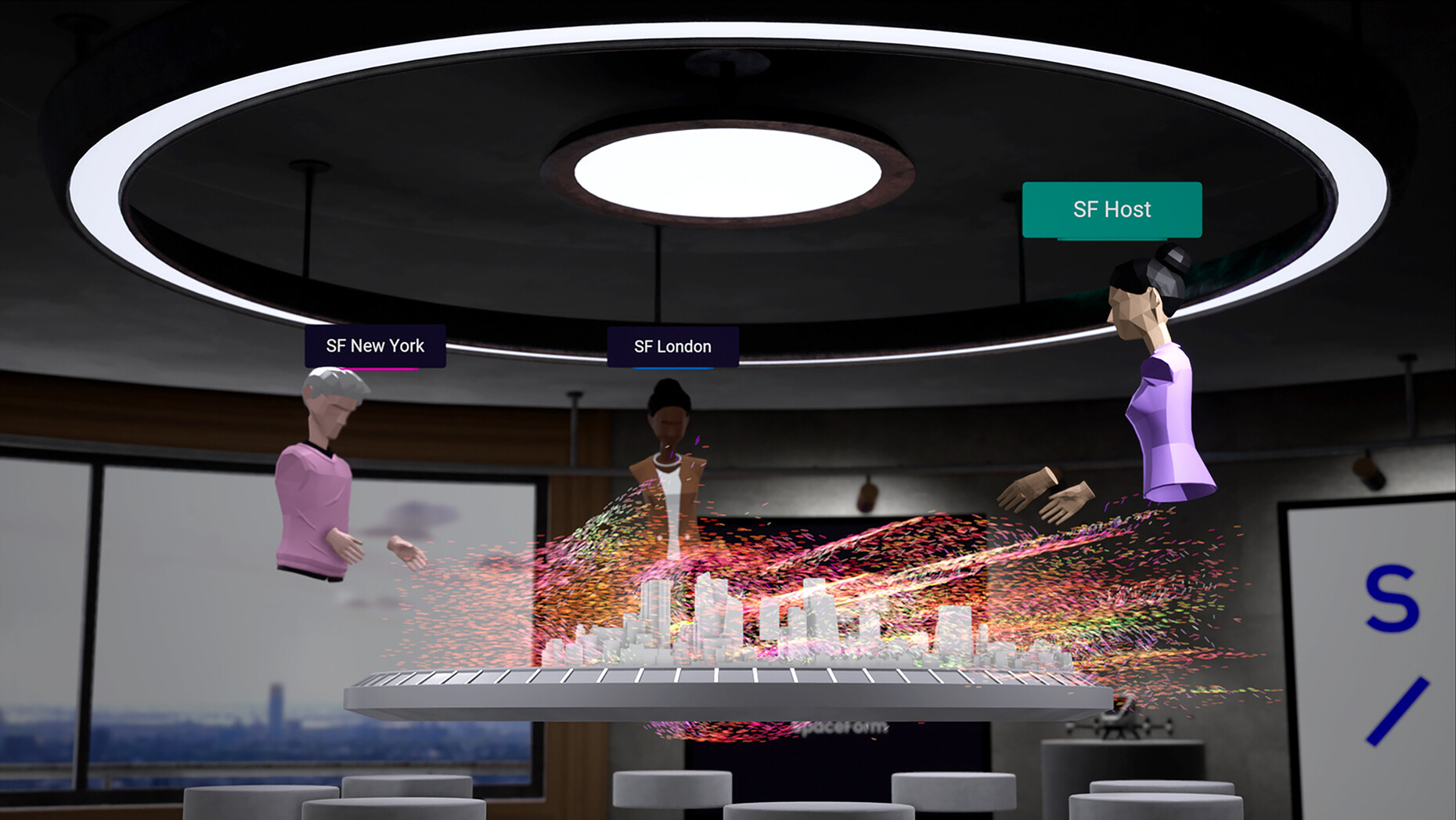NEW WORK
Closing gaps
The current prototype of SpaceForm shows a multi-user platform in 3D and is designed to enable presentation in a virtual workspace where participants can enter in the form of avatars. Projects should thus be able to be presented in a more sustainable, interactive and time-saving way, away from previous options such as video chats or static presentation programmes. For collaboration, simulations of immersive 3D environments in real time are to be offered as well as a connection to other visualisation programmes such as Rhino 3D, Rivet, Sketchup or Unreal to enable data exchange between the programmes. Digital twins, architectural designs and urban data could thus be examined together in a virtual, private workspace and in three-dimensional view – almost as if one were physically present.
Up to 100 people should be able to work together in a digital space. It is no coincidence that the graphics resemble those of a video game: "We used a gaming technology stack, very similar to Fortnite and applied it to the world of architecture and design. The use of immersive, real-time gaming technology in the built environment is exciting as it opens up new ways to explore and engage with the unbuilt world. Real-time environments allow people to feel what a space might be like, when you can explore that space with your team and clients, together, on any platform - this is a game-changer," says Jan Heuff, director of Squint/ Opera and CEO of SpaceForm.
The presentation of projects should thus become an interactive experience that comes as close as possible to the real meeting. "In the future every physical object will be connected to one another, sensing each other and everything in between. For every physical object, there will be a digital twin. For every physical space a virtual space. SpaceForm is the augmented creative collaborative environment of the future which will allow an instantaneous confluence of actual and imagined realities – the present and the future fusing in our augmented sense of reality," says Bjarke Ingels, BIG founder and creative director. So there is room for improvement and with a view to the rapid development of 3D virtual reality platforms so far, one can be curious about the future possibilities. SpaceForm cannot replace the sensual, haptic experience of materials, but it offers a dynamic form of digital collaboration that could be particularly helpful in the early stages of the development of architecture and design.









